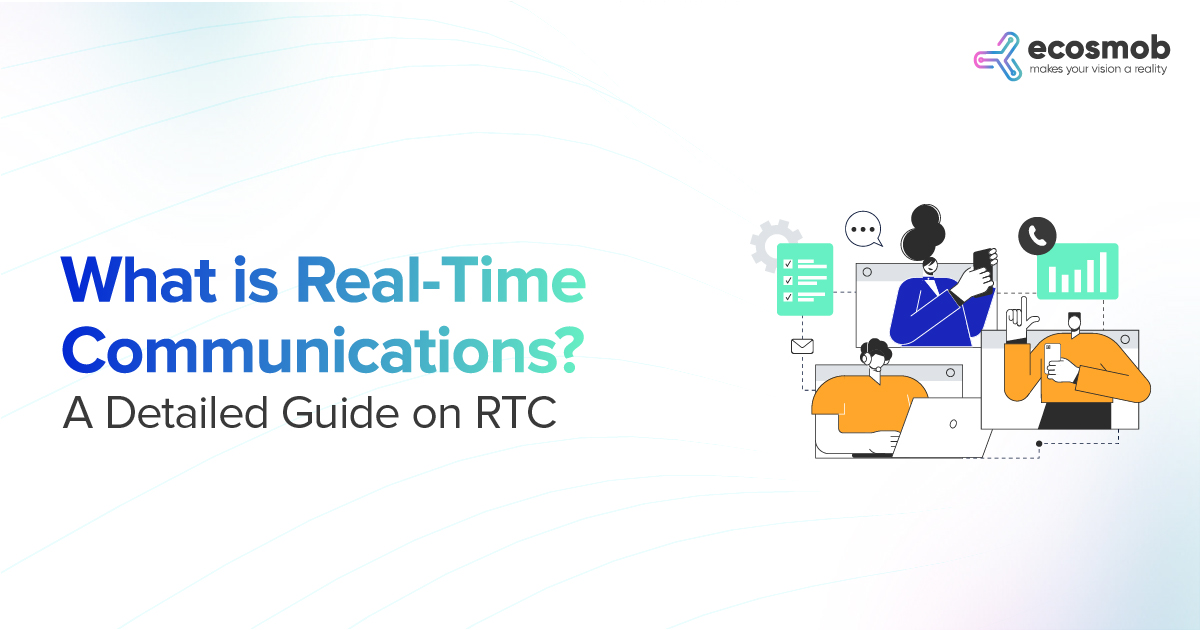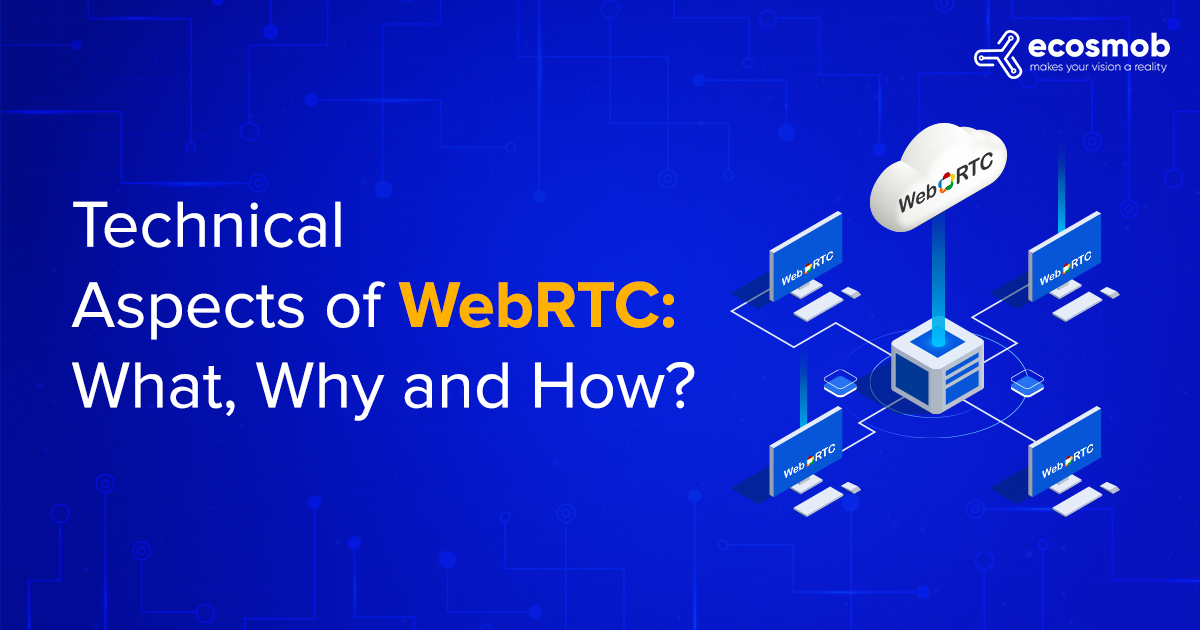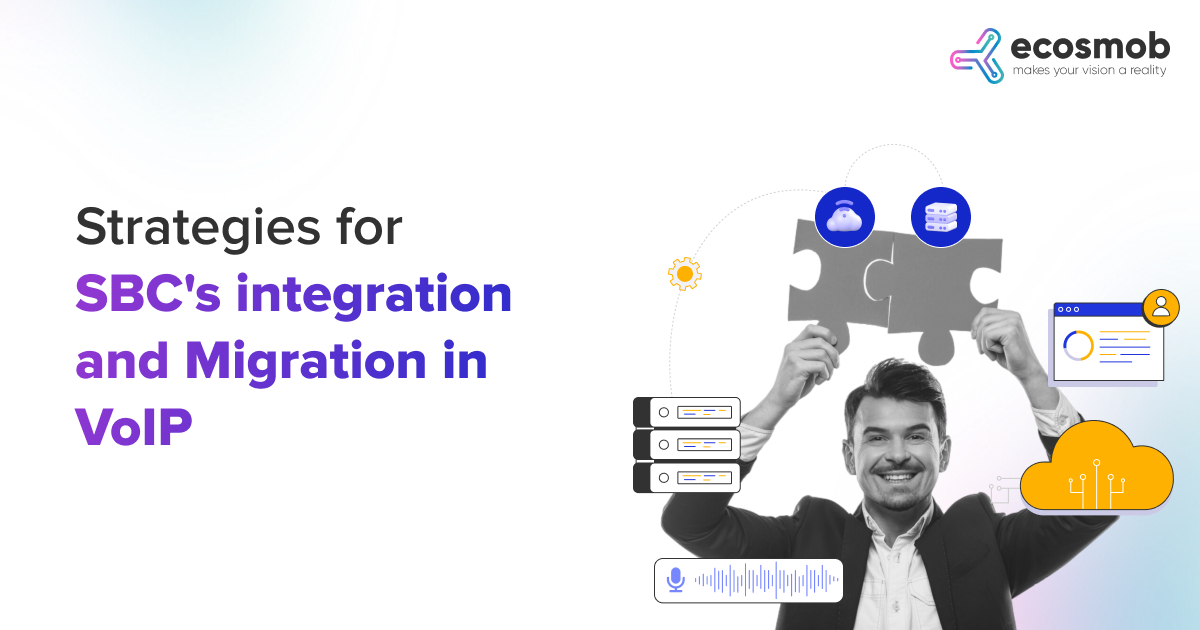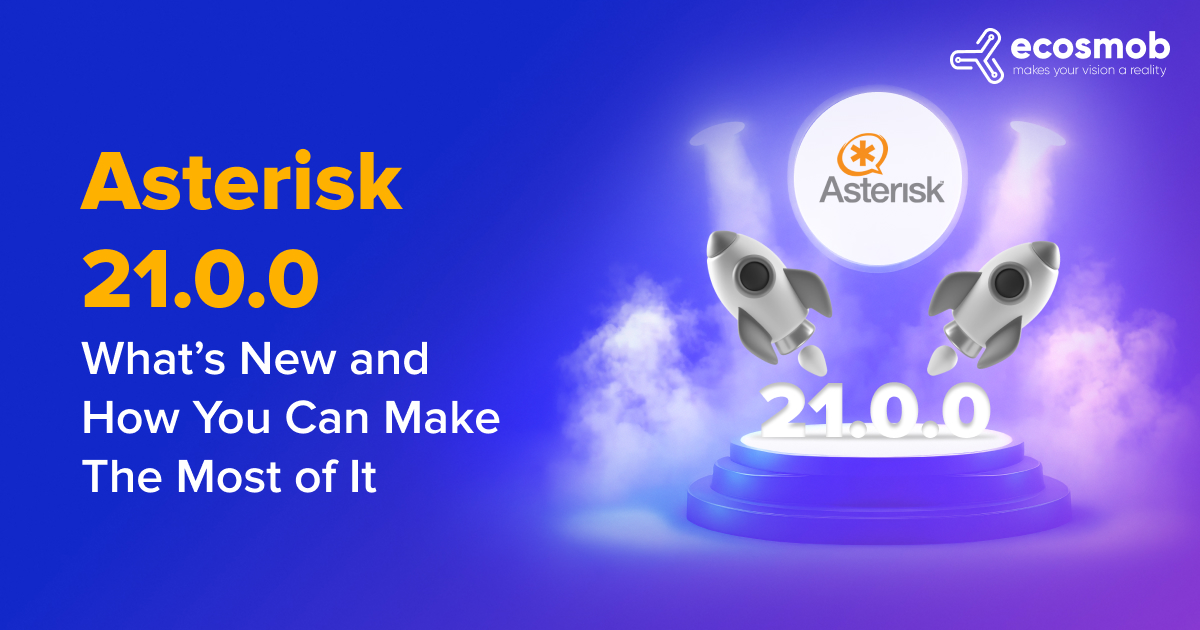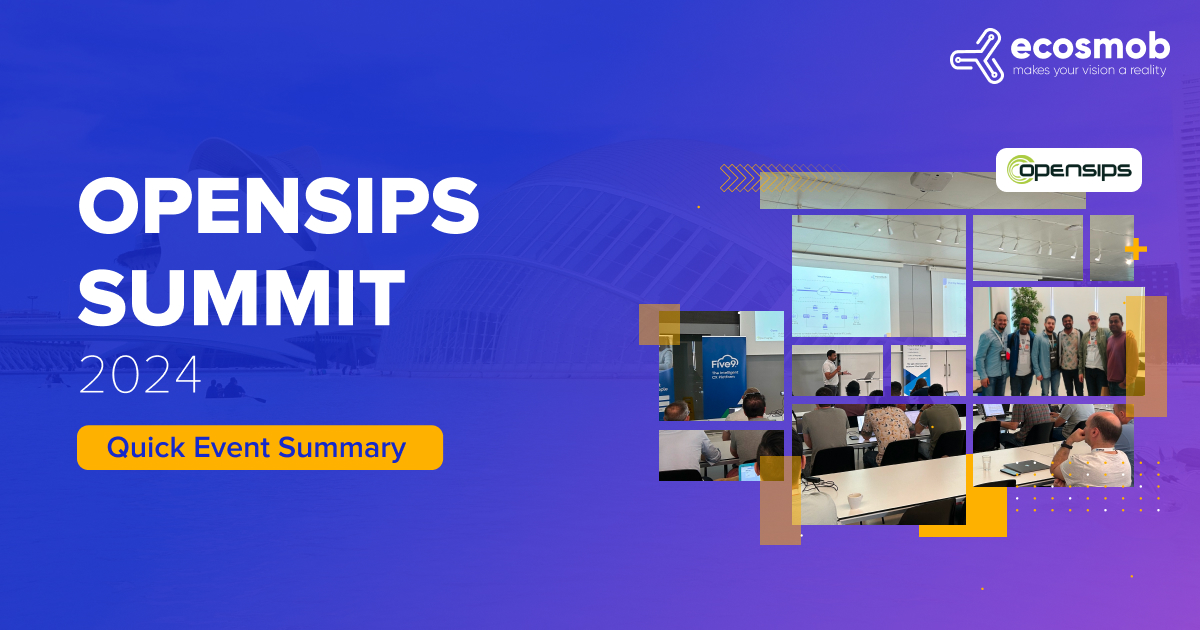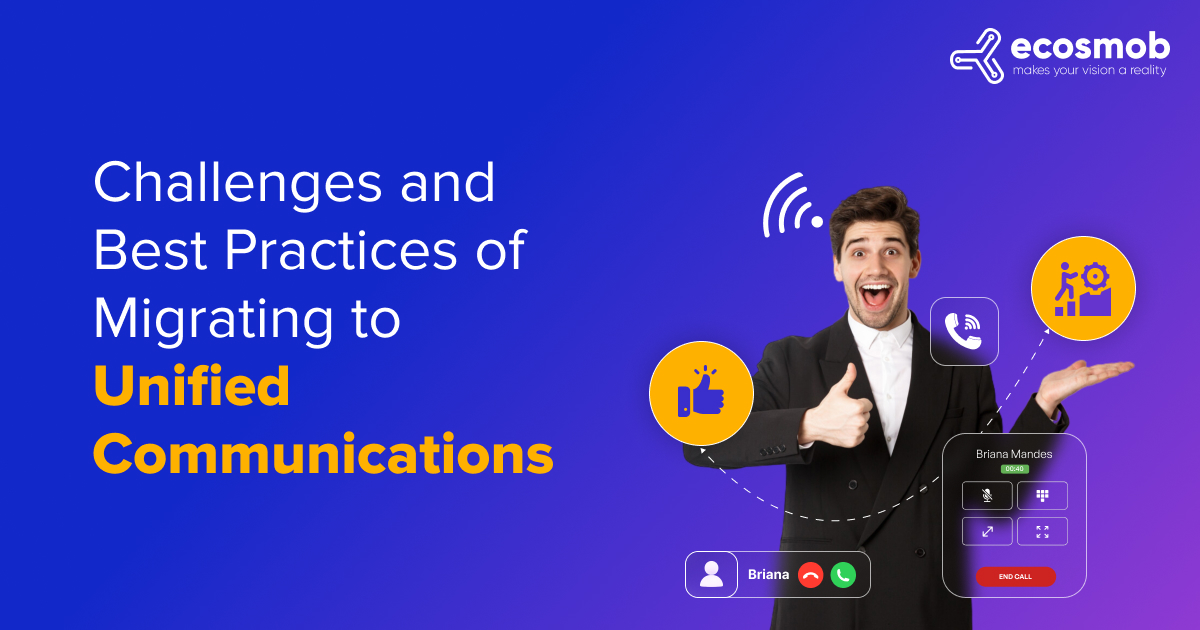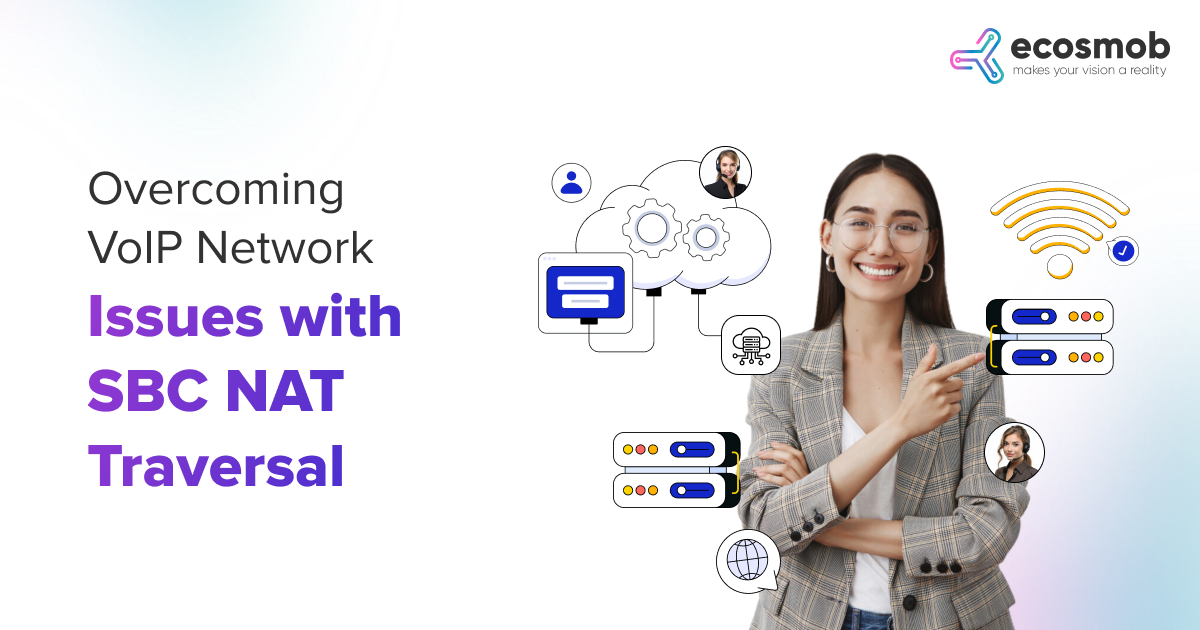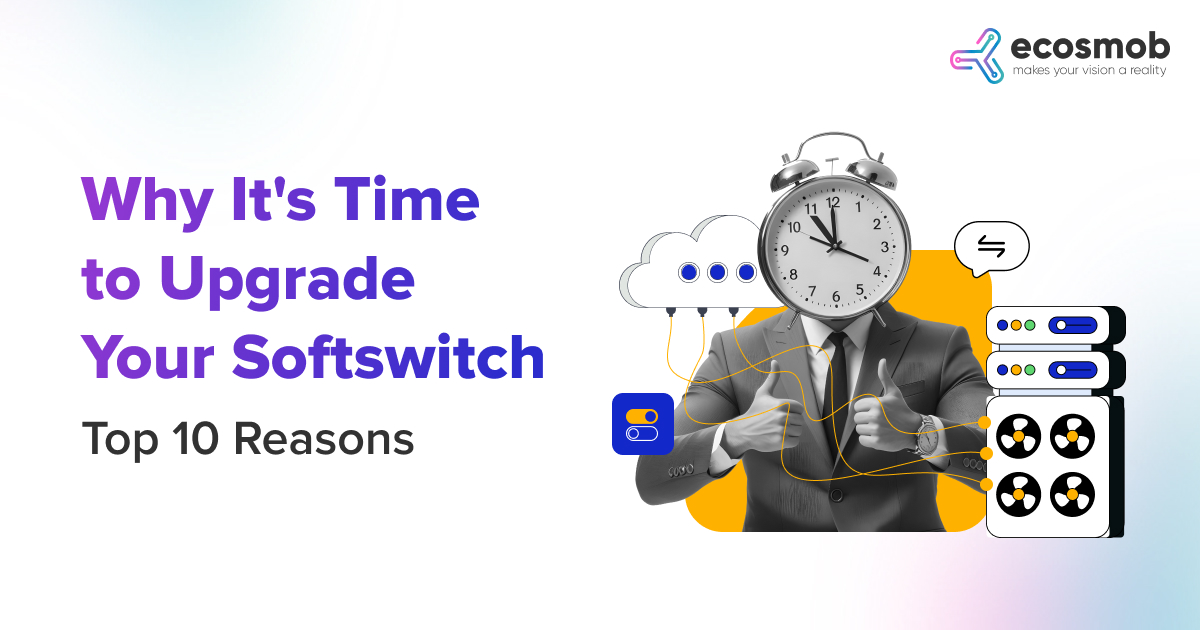When newbies talk about WebRTC solutions, it leaves them baffled about what it is, what it does, and what its usage is. Real-time communication has observed a boom compared to unified communication and collaboration since its inception in the past couple of years. WebRTC software development leverages the capacity of Real-Time Communication in web browsers. It expedites high-quality communication on the web by using essential building elements like network, audio, and video components in voice and video chat apps. WebRTC development allows building Real-Time applications for the browser.
So, the question arises how WebRTC solution development is unique and different from apps like Skype, Facetime, Zoom, etc. Unlike Skype, Facetime, and Zoom, WebRTC solutions do not need the installation of software or plugins; all it needs is web browsers. The components required to build a WebRTC application can be reached through Javascript API, enabling the developers to implement their own RTC web app.
The presence of WebRTC solution is standardized at API level at W3C and protocol level at IETF. It is compatible with Google, Mozilla, and Opera. The pace at which WebRTC (or real-time communication) has gained traction is encouraging and surprising to play with it and develop apps that work at the touch of a button.
So, What Is WebRTC?
Let’s discuss what WebRTC is and how it works under the hood. WebRTC stands for web real-time communication and doesn’t need servers to transfer data between end users. WebRTC solution development is becoming quite popular and its functionality to send data from peer to peer is eminent for all platforms. The only role of servers in WebRTC solution is to connect the two peers, and after the connection gets established between the peers, there is no need for servers. Once the first peer sends data to the signaling server, the server sends this data to the second peer and a connection gets established between both peers. Then on, these peers are ready to communicate with each other without the server.
Establishing the connection between both the peers is done with an SDP (Session Description Protocol) also known as an offer which is a media configuration of client one to the signaling server and the server sends it to client two. Client two stores the media configuration of Client one and sends another SDP to the signaling server, which is transferred to Client 1 and thus establishes a connection. Now that both the peers have information about each other, they need to know how to communicate. The primary function of WebRTC development is to establish a direct connection between two peers. The best part is that it does not need to install plugins or download native applications to run on a browser. Custom WebRTC development leverages the capabilities of this data and media exchange to deliver WebRTC Solutions.
How did WebRTC come into existence?
There had been a dire need to connect virtually with the need for video-conferencing and web-based communication for quite some time. This needed installing plugins and several other APIs. From a user’s point of view, it meant installing third-party apps, and from the developer’s perspective, they had to study complex stacks and protocols. In 2011 Google acquired GIPS, a VoIP and video conferencing company that had developed several elements of RTC like codecs and echo cancellation for WebRTC application development. Google announced GIPS technology as open-source and partnered with relevant organizations IETF and W3C for industry standardization. IN 2011, Google rolled out an open-source technology known as WebRTC for browser-based real-time communication. Ever since the inception of WebRTC, leading game players like Mozilla, Google, and Opera have showered the technology with great love. WebRTC solution development for various types of tailored applications has been on the go ever since.
Read our another blog on In-depth Guide to WebRTC Development
Major Components Of WebRTC Design
The prime components of WebRTC design use JavaScript APIs. Custom WebRTC solution development is the niche of today where the design of WebRTC solutions is as per different requirements. Several applications use WebRTC, like Google Meet, that do not require downloading any plugins. WebRTC implements three APIs:
● MediaStream
● RTCPeerConnection
● RTCDataChannel
Safari, Edge, Chrome, Firefox, and Opera support these three APIs on mobile and desktop platforms.
MediaStream
The Media Capture and Streams API (Media Stream), referred to as Media Streams API or MediaStream API is an API associated with WebRTC that transmits audio and video. While organizations build WebRTC solutions, Custom WebRTC development is in the highest demand.
MediaStream APIs’ primary function is to access media streams from local cameras and microphones. After establishing the connection between the peers, video and audio can be streamed among them. This is where we connect the stream we receive from getUserMedia() to RTCPeerConnection. A media stream comprises at least one media track added to the RTCPeerConnection once we want to transmit the data to the other remote peer.
const localStream = await getUserMedia({vide: true, audio: true});
const peerConnection = new RTCPeerConnection(iceConfig);
localStream.getTracks().forEach(track => {
peerConnection.addTrack(track, localStream);
});
Tracks can be added to RTCPeerConnection once before they are transferred to the remote peer. WebRTC Consultancy Service by companies throws a spotlight on these APIs to deliver perfect WebRTC solutions.
The MediaStream API has a few instrumental points:
● It has zero or more MediaStreamTrack objects that represent audio or video tracks.
● It provides security levels through user permission before a web application starts to get a stream.
● MediaStream API monitors the selection of input devices.
RTCPeerConnection
WebRTC Software Development is growing on a global scale, and multiple devices and apps have been able to connect upright without worry. Peer connect is a part of the WebRTC association where two applications on different computers interact using a peer-to-peer protocol. The RTCPeerConnection API portrays a WebRTC connection between a local computer and a remote peer. It provides a method to establish the connection to the remote peer, maintain and administer the connection and drop the connection once it is no longer needed.
This is in order to create an RTCPeerConnection object –
var pc = RTCPeerConnection(config);
Here config is an arrangement of URL objects comprising details about STUN and TURN servers used during the determination of the ICE candidates.
The RTCPeerConnection object manages each peer connection. After establishing the RTCPeerConnection, we need to create an SDP offer or answer depending on whether we call or receive the peer.
These are the key points of RTCPeerConnection API:
● The RTCPeerConnection() constructor returns a new RTCPeerConnection when a new connection is created between a local device and a remote peer.
● Handling all the peer connections between the local computer and remote peer are done by RTCPeerConnection object.
● It keeps track of local and remote media streams.
● It provides APIs to generate connection offers, accept answers, and more.
RTCDataChannel
We all know WebRTC is excellent for sending media streams like audio and video but one thing that most of us might not be aware that it is as remarkable for transmitting data over RTCPeerConnection. This is enabled by invoking createDataChannel() on RTCPeerConnection object.
const peerConnection = new RTCPeerConnection(configuration);
const dataChannel = peerConnection.createDataChannel();
For sending data over a data channel, one must wait until it has been opened by listening to an open event. Similarly, there is a close event when the data channel is closed. Custom WebRTC development uses this capability of WebRTC to curate apps that fit the business scenario for data exchange,
const messageBox = document.querySelector(‘#messageBox’);
const sendButton = document.querySelector(‘#sendButton’);
const peerConnection = new RTCPeerConnection(configuration);
const dataChannel = peerConnection.createDataChannel();
// Enable text area and button when opened
dataChannel.addEventListener(‘open’, event => {
messageBox.disabled = false;
messageBox.focus();
sendButton.disabled = false;
});
// Disable input when closed
dataChannel.addEventListener(‘close’, event => {
messageBox.disabled = false;
sendButton.disabled = false;
});
These are the key points for RTCDataChannel API:
● There is no intermediate server, low latency, and it uses Stream Control Transmission Protocol (SCTP) for communication.
● It is responsible for sharing all real-time data apart from audio/video.
● It ensures a speedy and secure data transfer from one browser to another.
How Businesses Use WebRTC For Small, Medium, and Large Enterprises
One of the most important things to consider while running a business is that its communication platform needs to be simplified. While the organizations based remotely may lack on this point, there is a quick escape for this in the business ecosystem by accommodating Custom WebRTC development that incorporates various scenarios. WebRTC solution comes in handy while trying to communicate with your peers in different geographical locations. This feature helps in sharing files, attending video conferencing sessions, and making audio calls via browsers by leveraging the capabilities of WebRTC software development.
Here are a couple of benefits of WebRTC:
1. Calls at the click of a button: You no longer now need to make calls by dialing numbers or memorizing them. WebRTC solutions can be easily integrated into business webpages to call customer care quickly without typing their number. Click-to-call buttons were available earlier as well; however, they needed to install plugins, reducing their feasibility. This led to the epiphany of WebRTC’s existence.
2. Customer-Centric Calls: When a customer calls a contact center or there is a call transfer between the contact center’s departments, there may be a waste of time for the agent to repeatedly collect data from the customer. Here, WebRTC solution comes into play. While a customer browses a website, all the relevant information can be passed along with the call details to the agent, reducing the time to re-gather the customer’s preferences and ultimately leading to client delight. WebRTC consultancy services gather the requirements of contact centers and offer solutions that last.
3. Web Conferencing: In today’s ecosystem, product-based businesses lose clients due to the gap between customer demands and the company’s delivery. This leads to the invitation of web conferencing which leads to a clear communication between both parties. WebRTC has underlying benefits where it allows seamless communication between the company’s sales agents and clients without having to install any app or plugin. They can simply communicate on the live browser without any third-party involvement. This means more accessible communication, quicker response, and higher conversion of leads. This is one more reason why WebRTC Solution Development is at its peak.
4. Information Exchange: While data security redeems the highest point while exchanging data, breach or intrusion remains a threat that needs to be combated. WebRTC is a picture-perfect mode to communicate between two parties without fearing third-party intrusion. There are two modes of transfer of data in WebRTC solution – Screen sharing and protected data transfer. In screen sharing, the screen is shared between two browsers, and in protected data transfer, there is end-to-end encryption which means no privacy leakage. VoIP solution providers leverage Custom WebRTC development’s capability to deliver solutions tailored to fit the bespoke demands of applications.
5. Platform and Device Independence: Any browser on any device with any operating system can connect with a device using a random browser irrespective of the operating system with platform independence. WebRTC consultancy service by leading WebRTC solution providers incorporate this by executing standard APIs from the W3C and protocols from the IETF. WebRTC has a voice and video encryption that is platform-independent.
6. Great Value For Businesses: WebRTC is a great technology that helps businesses operate more efficiently, adding value to them. The telecommunications industry is gaining traction as the digital landscape is evolving daily. All of this means a hike in customer interaction digitally and growth in popularity with WebRTC Software Development. Online chat facility is available via chatbots which don’t require plugin installation and excellent communication and quick delivery of applications using WebRTC Solution Development.
Ultimately Why Prefer WebRTC?
Multiple reasons can be jotted while choosing the WebRTC solution as a preferable mode of media and data sharing, among other technologies. The prime reason is that WebRTC application development follows a seamless procedure. It is an open-source project that peers, partners, and leaders can leverage to pool in and collaborate to enrich the community. WebRTC solution supports all modern browsers and doesn’t need to install plugins to function, so it is independent. WebRTC isn’t restricted to only web browsers, mobile applications can also use WebRTC to thrive impeccably in the market. While it does transfer media, it isn’t limited to only media and is quite powerful and versatile. It helps providers have live sessions, webinars, educational classes, online yoga sessions, and whatnot.
Want to know more about Ecosmob WebRTC solution development, you can contact us on +91777884285 (INDIA)/ +1-303-997-3139 (USA) or write to sales@ecosmob.com
